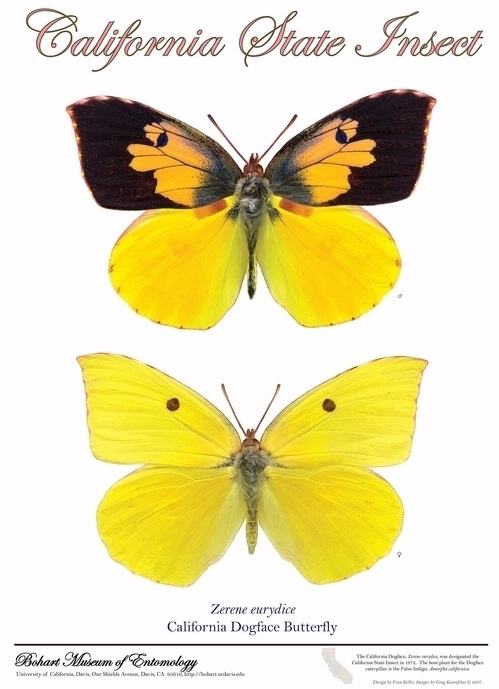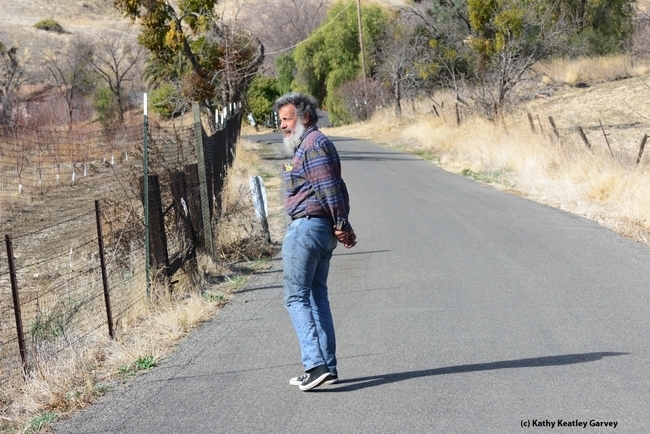
Odds are you've never seen the dogface butterfly, Zerene eurydice, and its host plant, false indigo, Amorpha californica, in Vacaville's Gates Canyon, located in Solano County, Calif.
And you may never see them there.
Butterfly guru Art Shapiro, UC Davis distinguished professor of evolution and ecology, who has monitored the butterfly populations of Central California since 1972 and maintains a research website at https://butterfly.ucdavis.edu/ fears that the dogface butterfly and its host plant will never reappear there or never reappear in his lifetime--no thanks to the destructive wildfire that swept through the canyon on Aug. 19, 2020.
In an article titled The Fire This Time, the Coast Range Burning, published in the winter 2021 edition of the Lepidopterists' Society newsletter, Shapiro documents flora and fauna destruction. He posted an earlier piece on The Loss of Gates Canyon on his website at https://butterfly.ucdavis.edu/news/loss-gates-canyon.
"How quickly can the Gates Canyon fauna recover?" Shapiro asks in his newsletter article. "Our June trip (2021) showed that many of the species seemingly extirpated in the canyon are still within relatively short dispersal distances to it, and hence able to recolonize if host plants are available...The only species that is almost certainly lost to the fauna is the California Dog-Face, Zerene eurydice, which to our knowledge, bred only in a small tributary canyon with a stand of the host, Amorpha californica. This plant has no known fire resistance. It does not stump-sprout and the whole stand burned."
On his website, Shapiro posted this on June 14, 2021: "At Gates, I would hazard a guess that it will take 20 to possibly 50 years to restore a semblance of the prior fauna. Perhaps half of the fauna might be back within a decade. Very local things like the California Dogface (Zerene eurydice) will probably never come back, at least in my lifetime; its host (Amorpha) does not appear to regenerate after fire and its known breeding site in a side canyon was completely charred."
The California dogface butterfly is found only in California. It thrives especially in the 40-acre Shutamul Bear River Preserve near Auburn, Placer County. The preserve, part of the Placer Land Trust, is closed to the public except for specially arranged tours.
Naturalist Greg Kareofelas of Davis, an associate of the Bohart Museum of Entomology, and a veteran docent for the Placer Land Trust butterfly site, said he hopes the plant will take hold again in Gates Canyon. "I've seen a Yolo (County) population of the plant come back after a fire. If the plant comes back, chances are, that a female will find the plant and recolonize it, or at least that is my hope."
The dogface butterfly, adopted as the official state insect on July 28, 1972, is so named because the wings of the male appear to be a silhouette of a poodle. It is also known as "the flying pansy." (Read more on how the butterfly became the state insect.)
The Bohart Museum poster of the male and female dogface butterfly is the work of Kareofelas and Fran Keller, then a graduate student at UC Davis and now a professor at Folsom Lake College. In 2013, Keller authored a 35-page children's book, The Story of the Dogface Butterfly, with photographs by Kareofelas and Keller, and illustrations by former UC Davis student Laine Bauer. The trio visited the Auburn site for their research, and Kareofelas also reared a dogface butterfly at his home in Davis and photographed the life cycle. Both the book and the poster are available online from the the Bohart Museum of Entomology gift shop. (The facility is closed to the public due to COVID-19 pandemic precautions.)
Attached Images:
